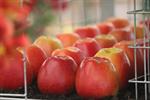 DEVELOP YOUR SCIENCE OR HEALTH CAREER TO A HIGHER LEVEL
DEVELOP YOUR SCIENCE OR HEALTH CAREER TO A HIGHER LEVEL
How are chemicals processed from food in the human or animal body?
Enhance your knowledge with a deeper understanding of life processes. A course designed for people working or wishing to work in a human or animal health or science related profession, as practitioner, educator or researcher. This course will expand your understanding of the more complex animal biochemistry by examining in depth the metabolic processes within the body as well as looking at other processes such as signaling and hormones.
PREREQUISITE Biochemistry II or equivalent
COURSE AIMS
- Explain the interaction between the various biochemical processes within the animal cell.
- Explain the processes of glycolysis and glycogen metabolism.
- Understand the transport mechanism of bio-chemicals through animal membranes.
- Explain the processes of electron transfer and oxidative phosphorylation, and their importance to energy regulation in animals.
- Explain the metabolism of carbohydrates.
- Explain the metabolism of lipids
- Explain the metabolism of amino acids.
- Explain biochemical nucleotide metabolism
- Explain enzyme reactions and catalysis in biochemistry.
- Explain other biochemical processes including biochemical communication through hormones and neurotransmission.
CONTENTS
There are eleven lessons in this module as follows:
1. Introduction
2. Glycolysis and Glycogen Metabolism
3. Movement through Membranes
4. Electron Transport and Oxidative Phosphorylation
5. Sugar and Polysaccharide Metabolism
6. Lipid Metabolism
7. Amino Acid Metabolism
8. Nucleotide Metabolism
9. Enzyme Activity
10. Other Processes
GLUCOSE AND ITS CENTRAL ROLE IN METABOLISM
Glucose is one of the most important molecules in our body and it plays a central role in metabolism.
It is one of the main cell fuels, especially in the brain in which is nearly the only fuel molecule that can diffuse easily through the brain barrier. As a molecule that is easily transported around the body in blood, it is also an energy transporting mechanism.
Glucose is also the main easily reached storage fuel, in the form of glycogen. Fats are fuel storage long term; glycogen can be used short term.
Glucose is a 6 carbon molecule with 5 hydroxyl groups and one aldehyde group in carbon 1. Glucose exists in the body as monomers or as complex carbohydrates like glycogen. In this case glucose residues polymerize into long glucose chains, linked together by α (1 4) glycosidic bonds. In plants, glucose residues polymerizes into starches and cellulose. In those, the link between glucose residues are (1 4) glycosidic bonds.
Glycolysis
Glycolysis is the pathway by which glucose is catabolised in the cell cytoplasm; all glucose in the cell cytoplasm is converted to glucose 6-phosphate by ATP.
Glycolysis is the first stage of cellular respiration, which is a catabolic process whereby complex molecules are broken down to release energy for other cellular processes and produce intermediates for biosynthesis. Occurring with or without oxygen, glucose (C6H12O6) is converted into two pyruvic acid molecules (C3H4O3). The fate of pyruvic acid then depends on the availability of oxygen.
Glycolysis is a two phased pathway. The first phase which makes up the first four reactions is preparatory and it involves the activation of glucose through a phosphorylation and its subsequent cleavage (separation) to triosephosphates. This phase utilises energy in form of 2 ATP molecules to kick-start the process. This is a common method in catabolic processes to make pathways more energy favourable, and it is observed in several biochemical pathways.
The second phase is the energy yielding phase which sees the triosephosphates converted to pyruvic acid with the release of energy as ATP molecules. The second phase includes 6 reactions.
Each step in the glycolysis is catalyzed by a different enzyme. Therefore, glycolysis includes the action of 10 enzymes.
Other sugars like fructose and mannose are also metabolized via the glycolytic sequence, but first they have to be converted to intermediates of glycolysis by auxiliary enzymes.
Five main kinds of reaction occur in glycolysis:
1.
Phosphoryl transfer, where a phosphoryl group is transferred from ATP to a glycolytic intermediate
2.
Phosphoryl shift, where a phosphoryl group is moved within a molecule from one oxygen atom to another
3.
Isomerization, where a ketone is converted to an aldose, this reaction is reversible
4.
Dehydration, where a water molecule is formed and removed from the glycolytic intermediate
5.
Aldol cleavage, where a carbon-carbon bond is split to produce an aldose and a ketose